Gadot Agro provides post-harvest solutions to growers, retailers, and users of various flowers aiming to improve the quality and shelf-life of cut flowers. Gadot Agro's teams are located in several locations worldwide, providing technical advice directly at the farm and assisting in addressing challenges encountered by growers or retailers. One of these challenges encountered in the flower industry is Botrytis Cinerea, a fungal pathogen also known as gray mold, as it may causing economic losses that may reach up to 80% in sensitive varieties.
The development of Botrytis Cinera
Gadot Agro states that Botrytis Cinerea spores may persist year-round in the greenhouse environment without causing damage until favorable conditions, such as wetness and above 90% humidity, promote their development. This will eventually lead to losses. In addition, they mention that the fungus' optimal temperature for development lies between 15-20 ℃. The high humidity and the optimum temperature may promote fungal growth both in the greenhouse and during transportation. This can be a true challenge for growers as any damage caused by Botrytis Cinerea may not be visible until the flowers reach the client.
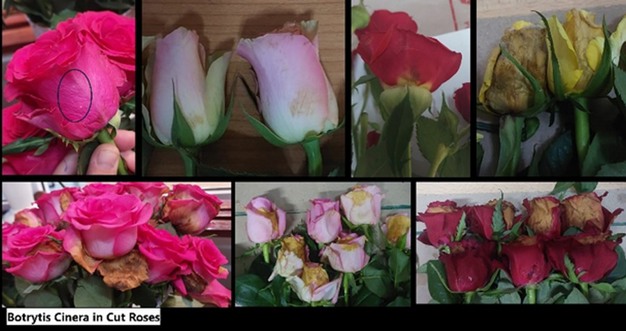
Controlling Botrytis Cinerea: dipping
According to Gadot Agro, controlling Botrytis Cinerea is crucial both pre- and post-harvest. The company explains: "Aside from using different fungicide, both preventive and curative, good agricultural practices are essential for managing Botrytis Cinerea in the greenhouse. When conditions are favorable for Botrytis Cinerea growth, more intense programs should be applied. In post-harvest, good agricultural practices and maintaining the cold chain are important for controlling Botrytis Cinerea, along with dipping application. Dipping in a fungicide is a crucial practice, especially when Botrytis Cinerea pressure is high or when varieties are sensitive to Botrytis throughout the year. Dipping right before shipping provides additional protection, in this way Botrytis can be controlled for a longer time while the good coverage of the flowers is ensured. Combining dipping with a suitable spray program in the field can provide the maximum treatment for effectively controlling Botrytis."
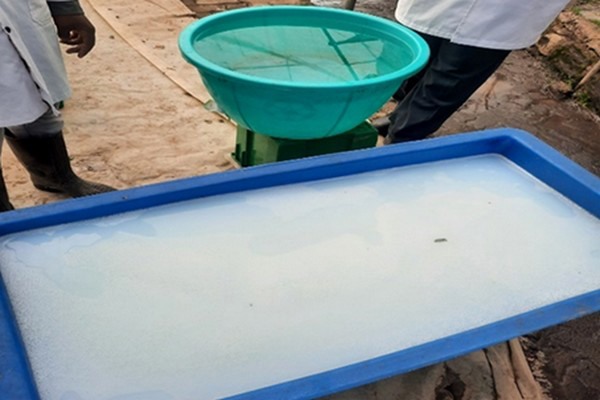
Dipping solution tank
The Gadot team adds: "T.O.G.® - STAR is a unique post-harvest dipping solution registered in several countries, including Kenya. It is specifically developed for the dipping of cut roses to control Botrytis Cinerea. T.o.g.- Star contains a special formulation that allows for effective application while ensuring thorough coverage of petals and leaves. The product originates from high-quality sources, and its relatively low rate and formulation are safer for both the crop and the environment compared to other products on the market."
Trials in Kenya
Between May and December 2023, trials were conducted in Kenya. The Gadot team comments: "We conducted the trials in collaboration with over 50 different farms. The trials included more than 100 varieties with low to high sensitivity to Botrytis Cinerea infection. T.o.g.- Star has demonstrated high efficacy in controlling Botrytis Cinerea, while it is also proven to be safe for use on the crops of the tested varieties. We analyzed the results of these trials, and we concluded that stems which were not treated with dipping had a 42.8% Botrytis Cinerea infection rate, while after dipping in T.o.g.- Star, it reduced to only 3.7% Botrytis Cinerea infection."
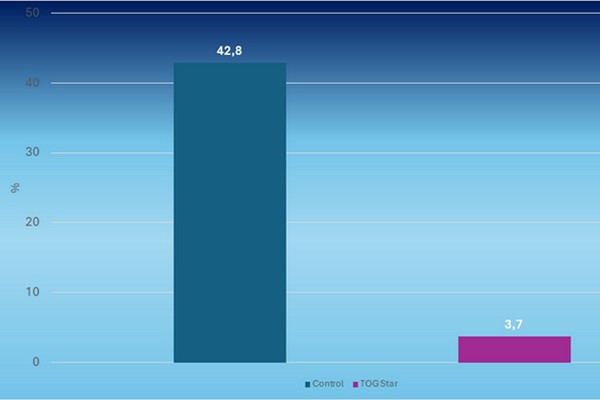
% Infected Stem with Botrytis Cinerea.
Among the over 100 varieties tested in the trials are the Ever Red, Revival, Nightingale, and Heide variety. The Gadot team shared some images of the trials. The team highlights that the control group on the left showed 90-100% of stems with Botrytis Cinerea infection, while the group treated with T.o.g.- Star on the right showed no Botrytis Cinerea infection.You can read more about these trials here.
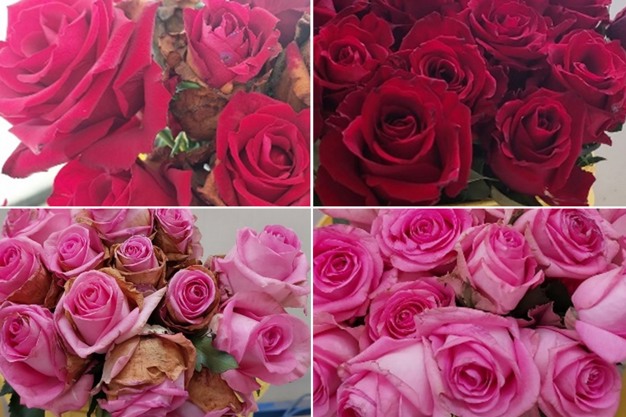
Top: The Ever Red variety, bottom: The Revival variety
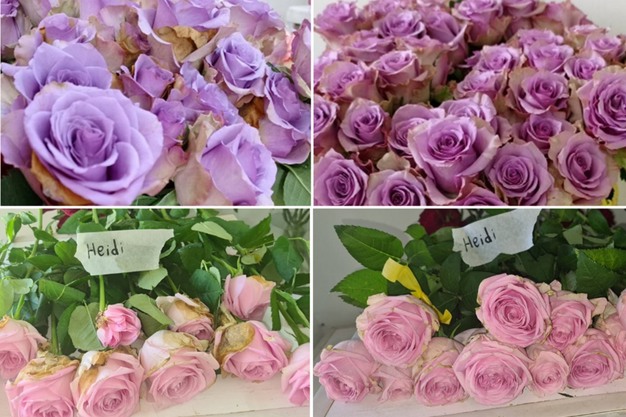
Top: The Nightingale variety, bottom: The Heidi variety
IFTEX 2024
Gadot Agro will attend the IFTEX 2024 in Nairobi from June 4-6. At stand D.5.23 they will provide more details about how they can contribute to improving the quality of cut-flowers, and prolonging their vase life.
For more information:
Hila Lati, Africa Regional Manager
Gadot Agro
+972-8-6308000
[email protected]
[email protected]
www.gadotflowercare.com
